
by Stemedix | Jul 3, 2023 | Traumatic Brain Injury, Stem Cell Therapy
Brain injuries resulting from car accidents can vary in severity, ranging from mild concussions to more severe traumatic brain injuries (TBIs). The symptoms experienced can also vary depending on the specific nature and extent of the injury. Here are some common symptoms associated with brain injury from a car accident:
Loss of consciousness: The person may experience a temporary loss of consciousness, ranging from a few seconds to several minutes. However, it’s important to note that loss of consciousness doesn’t always occur in every brain injury case.
Headache: Persistent or recurring headaches are a common symptom following a brain injury. The severity and frequency of the headaches can vary.
Confusion and disorientation: After a car accident, individuals may feel confused, disoriented, or have difficulty remembering events before or after the accident. They may have problems with concentration and may struggle to follow conversations or instructions.
Memory problems: Short-term or long-term memory loss can occur after a brain injury. This may involve difficulty remembering recent events, learning new information, or recalling past memories.
Dizziness and balance issues: Feeling lightheaded, dizzy, or having problems with balance and coordination are common symptoms. This may make it difficult to walk or perform everyday activities.
Nausea and vomiting: These symptoms can be a result of the injury itself or associated with dizziness and imbalance.
Sensory changes: Changes in sensory perception can occur, such as blurred vision, ringing in the ears (tinnitus), sensitivity to light or sound, or a bitter taste in the mouth.
Mood swings and emotional changes: Brain injuries can lead to emotional and behavioral changes, including irritability, depression, anxiety, mood swings, and a decreased tolerance for stress. These changes can affect personal relationships and overall well-being.
Sleep disturbances: Insomnia, excessive sleepiness, or changes in sleep patterns are common after a brain injury.
Sensation and coordination problems: Some individuals may experience numbness or tingling in the extremities, difficulties with coordination, or weakness in the muscles.
It’s important to remember that these symptoms can vary depending on the severity of the brain injury and the individual. If you or someone you know has been involved in a car accident and is experiencing any of these symptoms, it is crucial to seek medical attention immediately.
What Treatments Help for Brain Injury Recovery?
The treatment and management of a brain injury depends on its severity and the specific symptoms and complications experienced. Recovery from a brain injury can be a complex and individualized process.
In the acute phase following a brain injury, medical professionals focus on stabilizing the individual and preventing further damage. This may involve surgery to address bleeding or swelling in the brain.
Rehabilitation therapies are utilized to address specific impairments and promote recovery. These may include:
- Physical therapy: To improve mobility, strength, balance, and coordination.
- Occupational therapy: To regain skills necessary for daily activities and improve cognitive function.
- Speech and language therapy: To address communication difficulties, speech impairments, and swallowing problems.
- Cognitive rehabilitation: To enhance cognitive abilities such as memory, attention, problem-solving, and organization skills.
- Vision therapy: To address visual disturbances or impairments.
Medications may be prescribed to manage specific symptoms associated with brain injuries, such as pain, seizures, muscle spasms, depression, anxiety, or sleep disorders.
Emotional and psychological support is essential for individuals recovering from brain injuries. Counseling or therapy sessions can help individuals and their families cope with the emotional and behavioral changes that may occur.
Depending on the specific impairments, assistive devices such as mobility aids, communication devices, or memory aids may be recommended. Modifications to the home or workplace environment may also be necessary to support the individual’s recovery and independence.
Support from family, friends, and support groups can play a crucial role in the recovery process. Educational programs can help individuals and their families understand the nature of brain injuries, manage expectations, and learn strategies for coping and maximizing recovery.
Adopting a healthy lifestyle can support brain injury recovery. This may include getting sufficient rest, eating a balanced diet, engaging in regular exercise (as appropriate), and avoiding substances that could interfere with recovery, such as alcohol or certain medications.
It’s important to note that every brain injury is unique, and treatment plans should be tailored to the individual’s specific needs. A multidisciplinary team of healthcare professionals, including physicians, neurologists, therapists, and psychologists, will work together to create a comprehensive treatment plan and monitor progress throughout the recovery journey.
Can Mesenchymal Stem Cell Therapy Help in Brain Injury From Car Accident?
Mesenchymal stem cell (MSC) therapy is an area of ongoing research within the regenerative medicine field and holds promise for various medical conditions, including brain injuries. MSCs are a type of adult stem cell that can be derived from different sources, such as bone marrow, adipose tissue (fat), or umbilical cord tissue.
Preclinical studies and early clinical trials suggest that MSC therapy may have potential benefits in brain injury repair. Here are some ways in which MSC therapy might help:
Anti-inflammatory effects:
MSCs have immunomodulatory properties, meaning they can regulate the immune response and reduce inflammation. In brain injuries, inflammation plays a significant role in secondary damage. MSCs have been shown to decrease inflammation in animal models of brain injury, potentially promoting a more favorable environment for healing.
Neuroprotective effects:
MSCs may secrete various factors that have protective effects on brain cells. These factors can enhance cell survival, promote tissue repair, and stimulate the growth and differentiation of new neurons. Additionally, MSCs may have antioxidant properties, helping to reduce oxidative stress, which can be harmful to brain cells.
Modulation of scar formation:
Following a brain injury, scar tissue formation can impede the regeneration and repair process. MSCs may modulate scar formation by reducing the deposition of scar tissue components and promoting tissue remodeling.
Promotion of angiogenesis:
MSCs have the potential to stimulate the formation of new blood vessels (angiogenesis). This can enhance blood flow to the injured brain tissue, delivering oxygen and nutrients, which are essential for the healing process.Early results of MSC therapy for brain injuries are promising and the field of regenerative medicine is ongoing with its research. It’s always advisable to consult with healthcare professionals and experts in the field to discuss potential treatment options for brain injuries. If you are interested in learning more about the symptoms of Brain Injury From a Car Accident, contact a care coordinator today from Stemedix!

by admin | Jun 28, 2023 | Mesenchymal Stem Cells, Stem Cell Research, Stem Cell Therapy
Cigarette smoking continues to be the leading contributor to preventable disease and death in the United States, including cancer, heart disease, stroke, lung diseases, diabetes, and chronic obstructive pulmonary disease (COPD). Smoking cigarettes also increases the risk of tuberculosis, certain eye diseases, and problems of the immune system, including rheumatoid arthritis.
An abundance of clinical research has clearly shown the detrimental effects cigarette smoke has on nearly every area of the body. However, while assumed to be equally dangerous in its effect on stem cells, there is surprisingly little research exploring the negative implications of cigarette smoking on stem cells.
In this review, Nguyen et al. share findings of recent studies on the effects of cigarette smoking and nicotine on mesenchymal stem cells (MSCs), with a specific focus on dental stem cells.
With their ability to self-renew, develop into specialized cell types, and migrate to potential sites of injury, stem cells have demonstrated the potential to build every tissue in the body and have also demonstrated great potential for tissue regeneration and associated therapeutic uses.
As the potential benefits and weaknesses of stem cells continue to be discovered, researchers have found that cigarette smoking negatively impacts the abilities of stem cells while also limiting stem cell viability for transplantation and regeneration.
While there has been a recent decline in the percentage of U.S. adults who smoke, over 34 million U.S. adults continue to be regular cigarette smokers. Interestingly, research has demonstrated the concentration of nicotine to be significantly higher in saliva than in blood plasma following nicotine administration via cigarette, e-cigarette, and nicotine patch – in some cases measuring up to eight times higher concentrations. Considering this research and considering the established detrimental effects of e-cigarette vapor – and presumably nicotine – on teeth and dental implants, the authors of this review hypothesized that there would be a similar effect when dental stem cells are exposed to cigarette smoke.
Reviewing the effect that cigarette smoke has on MSCs, the authors found that exposing MSCs to cigarette smoke extract (CSE) and nicotine impaired cell migration, increased early and late osteogenic differentiation markers, decreased cell proliferation, and significantly inhibited the ability of MSCs to differentiate to other types of cells.
Nguyen et al. reviewed research that determined cigarette smoke produced a negative impact on the proliferation and differentiation of dental pulp stem cells (DPSCs). Specifically, this research demonstrated a significantly higher depression of alkaline phosphatase (ALP) and osteocalcin (OC) genes in smokers when compared to nonsmokers. Additional studies found that smokers demonstrated reduced calcium deposition levels and production of ALP when compared to nonsmokers.
Cigarette smoke and nicotine were also found to negatively affect the migration capability of dental stem cells, slowing the migration rate by up to 12% in smokers while also producing a smaller reduction of scratch wound areas when compared to nonsmokers.
While there are not many studies directly comparing the effects of cigarette smoke and nicotine on MSCs and dental stem cells, the authors conclude that dental stem cells exhibit similar characteristics to bone marrow MSCs and that both of these types of stem cells demonstrate similar negative responses upon their exposure to nicotine.
While the authors call for further research to better understand the specific effects of cigarette smoke on dental stem cells, the authors conclude that the findings demonstrating similar responses to cigarette smoke and nicotine between dental stem cells and MSCs can be used to inform future dental stem cell studies. These findings will help dentists better identify which patients might be at an increased risk of poor healing in the oral cavity and if smoking cessation should be considered before undergoing any invasive or traumatic dental procedure, such as tooth extraction.
Source: Comparison of the effect of cigarette smoke on mesenchymal stem ….” https://journals.physiology.org/doi/10.1152/ajpcell.00217.2020.

by admin | Jun 21, 2023 | Stem Cell Therapy, Regenerative Medicine, Stroke
Recent advances in medical accessibility, technology, and treatment have increased the average human life expectancy, while at the same time, increasing the risk for neurodegenerative diseases and other disorders – including stroke.
According to the CDC, nearly 800,000 people in the United States suffer a stroke each year, with 87% of these strokes being ischemic strokes. An ischemic stroke is a medical emergency that occurs when the blood supply to part of the brain is reduced or interrupted. Without the ability to deliver oxygen or nutrients, brain cells begin to die in a matter of minutes.
Even when identified and treated early, the lasting, long-term effects associated with stroke result in economic and social costs for patients, their families, and society in general. As an example, the CDC estimates that stroke-related costs, including those associated with healthcare and missed days of work, exceed $50 billion dollars in the U.S. each year.
While medical research continues to search for ways to prevent stroke by addressing underlying causes, primary stroke treatment continues to focus on managing stroke progression while also treating related symptoms.
Recently regenerative medicine, also known as stem cell therapy, along with rehabilitation therapy has been presented as an effective stroke treatment. In this review, Berlet, et al. explore the potential synergistic outcomes of stroke treatment observed when combining current advances in stem cell research with known stroke rehabilitation strategies. The authors also review research while considering the advantages and disadvantages of using the combination of stem cell transplantation and rehabilitation as a way to mitigate the devastating effects of stroke.
Combining stem cell treatment with rehabilitation therapy and outside strategies, such as an enriched environment (EE) may enhance functional stroke recovery and allow for an ideal long-term therapy for stroke patients. With the goal of enhanced brain plasticity, these therapies aim to introduce intrinsic or extrinsic stimuli to assist with the reorganization of the brain’s structure, functions, and connections.
The human brain has been demonstrated to be more plastic after experiencing an injury. With EE promoting improved stem cell survival and migration, and stem cell therapy creating the potential for an extended window of treatment, the combination is viewed as a potentially effective therapy when combined.
Preclinical experimentation has demonstrated stem cell therapies to be effective days after an ischemic stroke occurs, providing a very important window of time for critical stroke treatment to occur. While this is certainly promising information, the authors also point out that there has been a disappointing and frustrating disconnect between these preclinical findings and what is observed in clinical experimentation.
Considering this, the authors identify determining the optimal clinical stem cell route of administration, dosage, and timing as key areas of study to better understand – and maximize – the therapeutic potential of stem cells in the treatment of ischemic stroke.
While Berlet et al. calls for additional research into the ideal route of stem cell administration, type dosage, and timing to further confirm the efficacy of stem cell transplantation for the treatment of ischemic stroke, the authors conclude that the addition of stem cell therapy to rehabilitation has significant potential to create a conducive host microenvironment to facilitate the repair process.
Source: “Combination of Stem Cells and Rehabilitation Therapies for … – NCBI.” 6 Sep. 2021, https://www.ncbi.nlm.nih.gov/pmc/articles/PMC8468342/.

by admin | Jun 14, 2023 | Stem Cell Therapy, COPD, Regenerative Medicine
Chronic obstructive pulmonary disease (COPD) is a chronic inflammatory lung disease that causes obstructed airflow from the lungs. Affecting an estimated 15 million people in the United States alone, COPD is characterized by progressively worsening symptoms, including breathing difficulty, cough, mucus (sputum) production, and wheezing, and is most often the result of prolonged exposure to cigarette smoke.
Not just an issue for those in the U.S., COPD has been demonstrated to be a preventable and treatable global health challenge. With an estimated 3.5 million worldwide deaths attributed to COPD each year, the disease is currently the third leading cause of death.
While there have been medical advances in the treatment of COPD, these therapies focus primarily on symptomatic relief and not the reversal of lung function deterioration or improvement in patients’ quality of life.
Since stem cells are known to differentiate into a wide variety of cell types and have been previously used to regenerate lung parenchyma and airway structure, they are believed to be an evolving and promising therapeutic treatment option for those with COPD.
Supported by extensive studies exploring the mechanism of stem cells in the regulation of COPD, experts have demonstrated that stem cells possess multidirectional differentiation potential and are able to differentiate into specific forms of alveolar epithelial cells (type I and/or type II) and participate into the repair of lung tissue structure.
In this review, Chen et al. summarize the most relevant findings of eight clinical trials that explore the treatment of COPD with mesenchymal stem cells (MSCs).
These clinical trials, conducted between the years of 2009 – 2020, examined using different modes and doses of a variety of autologous or allogeneic MSCs, including bone marrow-derived stem cells (BM-MSCs), adipose tissue-derived stem cells (AD-MSCs), and umbilical cord-derived stem cells (UC-MSCs), in the treatment of COPD.
Examining the different types of MSCs used for these clinical trials, the authors conclude that while all types of MSCs have benefits in this application, AD-MSCs and UC-MSCs are very promising, primarily because the source is easily available; additionally, the process of collecting UC-MSCs is non-invasive. Looking at trends in recent clinical trials, the authors find a general increase in the shift toward using AD-MSCS and UC-MSCs and away from BM-MSCs, primarily for the reasons mentioned previously.
Analyzing results of these clinical trials related to mode, schedule, and dosage of administration, the authors found that stem cells administered intravenously into the body concentrated in the lungs for thirty minutes before gradually migrating to the liver; the inability of stem cells to keep stem cells in the lungs for a longer period of time was noted as a potential barrier that could limit the effectiveness of stem cell therapy for this condition.
To address this concern, the authors recommend adjusting the schedule and/or mode of administration, indicating that prior research suggests multiple doses and administration via airway injection using a bronchoscope is a good way to deliver stem cells directly to the lungs.
Chen et al. found that regardless of what type of MSCs and what mode of administration was used, stem cell therapy for the management of COPD has been proven to be safe and without evidence of any adverse events. However, only 2 of the eight clinical trials evaluated for this review demonstrated that MSCs could improve pulmonary function. The results of the other six indicated that MSCs had no effect on pulmonary function.
Considering these findings, and in view of the small number of patients in the two clinical trials demonstrating therapeutic improvement on pulmonary function, the authors call for further research to better understand the effects of MSCs on improvements of pulmonary function.
In closing, Chen et al. indicate that stem cell therapy may have a significant role in the future treatment of COPD and other respiratory diseases and offer a number of suggestions for future clinical trials. The recommendations provided by the authors for future clinical trials examining the therapeutic effects of MSCs when treating COPD include expanding the sample size, extending the follow-up time to a minimum of 2 years, selecting patients with different grades of COPD, considering using AD-MSCs and UC-MSCs (rather than BM-MSCs); and further exploring the effects of MSC on change in other inflammatory, immune, and metabolic indicators.
Source: “Stem cell therapy for chronic obstructive pulmonary disease – PMC.” 15 Jun. 2021, https://www.ncbi.nlm.nih.gov/pmc/articles/PMC8280064/.

by admin | Jun 7, 2023 | Stem Cell Therapy, Mesenchymal Stem Cells, Osteoarthritis, Regenerative Medicine
Osteoarthritis (OA) is the most common form of arthritis and is estimated to affect over 500 million people worldwide. A result of the progressive deterioration of the protective cartilage that cushions the ends of the bones, OA most commonly affects the hands, knees, hips, and spine and is characterized by pain, stiffness, and loss of mobility in and around the affected areas.
Without a known way to treat and/or prevent OA from occurring, current conventional treatment of the condition typically involves a combination of prescription and OTC drugs, physical therapy, and lifestyle adjustments in an effort to treat and slow the progression of the symptoms associated with OA.
As the beneficial applications of stem cells continue to emerge, and considering their ability to replace and repair cells and tissues throughout the body, researchers believe that they can be used to treat joint disorders, including OA. The majority of the current stem cell therapies being investigated for use in treating OA use mesenchymal stem cells (MSCs), primarily due to their multilineage differentiation towards cell types in the joints and for their immunoregulatory functions.
In this review, Kong et al. provide detailed information on OA and MSCs, share updated information on pre-clinical and clinical trials and related applications of MSCs, and discuss additional efforts on cell-based therapy for treating OA and other joint and bone diseases.
Several preclinical models have investigated MSCs in treating OA and have demonstrated success in generating cartilage from MSCs. In addition, several animal models have demonstrated the beneficial effect of MSCs on cartilage, including protecting existing cartilage, repairing defects of joint cartilage, regenerating and enhancing cartilage, and even preventing OA.
Additionally, there have been several animal models evaluating the effects of intra-articular injection of MSCs for treating OA with researchers noting marked regeneration of tissue and decreased degeneration of articular cartilage.
Clinical trials using MSCs to treat human joint cartilage defects have found that MSCs could be used to repair cartilage defects, improve joint function, reduce pain, and have demonstrated the potential to use MSC therapy for cartilage repair and regeneration as a way to reduce signs and symptom commonly associated with OA.
Although these studies have demonstrated the tremendous potential associated with the use of MSCs for treating OA, they have also highlighted some potential concerns associated with MSC-based therapy. These concerns include determining the specific number and type of MSCs best suited for treating OA, a better understanding of the timing and delivery strategies for the administration of MSCs, and identifying the stages of disease best suited for MSC therapy.
Further concerns highlighted by the authors include the potential of genetic influences when using autologous MSC cells for treatment, the potential for the overall quality of MSC cells used in older patients to be too low, and the overall safety of stem cell therapy as a therapeutic treatment option for OA.
Despite the concerns identified above, Kong et al. conclude that the advancement of regenerative medicine and innovative stem cell technology offers a unique and exciting opportunity to treat OA.
Source: “Role of mesenchymal stem cells in osteoarthritis treatment – NCBI.” https://www.ncbi.nlm.nih.gov/pmc/articles/PMC5822967/.

by admin | May 31, 2023 | Stem Cell Therapy, Regenerative Medicine
Neuropathic pain (NP) is a complex, wide-ranging, and often debilitating condition that contributes to chronic pain. Caused by a number of different factors and contributors, the condition most commonly involves disease, chronic condition, or injury to the nervous system.
Defined by the International Association for the Study of Pain (IASP) as pain that occurs as a direct consequence of a lesion or disease affecting the somatosensory system, NP is responsible for 20 to 25% of patients who experience chronic pain and is estimated to affect 8% of the population.
While there have been significant improvements in pharmacological and nonpharmacological treatment for NP, these practices only provide consistent and lasting pain relief to a small percentage of patients. Recently regenerative medicine, also known as stem cell therapy, is being explored as a safe and effective NP therapy option.
In this review, Joshi et al. explore the possibilities of using stem cells in NP patients and discuss the relevant challenges associated with their uses in this application.
After identifying and defining the nine most common conditions associated with chronic, persistent, or recurring NP, the authors begin this review by pointing out that NP, to date, has been poorly recognized, poorly diagnosed, and poorly treated. A review of relevant literature has also demonstrated that the treatment of NP has consistently been a significant challenge for physicians, with most attempting to manage NP by targeting clinical symptoms rather than causative factors.
Most often, pharmacological treatment approaches for managing NP have included a variety of first-line drugs (tricyclic antidepressants, serotonin-norepinephrine reuptake inhibitors, and gabapentinoids) and opioid analgesics (tramadol) as second-line drugs. Third-line pharmacological NP treatment includes stronger opioids, such as morphine and oxycodone. Nonpharmacological NP treatment options for drug-refractory NP include interventional therapies (peripheral nerve blockade and epidural steroid injection), physical therapies (massage and ultrasound), and psychological therapies (cognitive behavioral therapy).
Long believed to arise from neurons, recent studies have demonstrated the important role of immune system response in the development of NP. Specifically, immune cells were found not only to be the source of pain mediators but also to produce analgesic molecules. These findings led researchers to believe that neutrophils and macrophages could each have a major role in early NP development.
Research has indicated that nerve injuries trigger an organized series of events to mount an inflammatory response. As part of this response to injury, pain following nerve damage has been shown to be mitigated by cytotoxic natural killer cells that selectively clear out partially damaged nerves. Additionally, this research has increasingly demonstrated that the immune system interacts with the sensory nervous system, contributing to persistent pain states.
Pharmacological and nonpharmacological treatment approaches have only produced temporary pain relief in patients with NP. Recently, stem cell transplantation has demonstrated significant potential for repairing nerve damage in NP and has emerged as a potential alternative therapeutic treatment approach. While the exact mechanism underlying stem cell-mediated pain relief remains unclear, specific stem cells (human mesenchymal stem cells, or hMSCs) have demonstrated the potential to provide trophic factors to the injured nerve as well as the ability to replace injured or lost neural cells.
While stem cell-based therapies have been shown to protect against neurodegeneration and promote neuroregeneration, the authors point out several issues that need to be addressed. These outstanding issues include identifying the optimal dosing for stem cell transplantation in the treatment of NP, sourcing of stem cells, considerations of autologous versus allogeneic transplants, precommitment to neuronal lineage, and specific dosing requirements.
Joshi et al. conclude that while NP is a chronic heterogeneous condition of the sensory nervous system with no current curative treatment, stem cells present exciting therapeutic prospects for NP. While further research to understand the exact mechanism underlying stem cell-mediated pain relief is required, current literature provides evidence of the potential of stem cells in slowing the degeneration process while promoting the survival and recovery of damaged nerves.
Source: Stem Cell Therapy for Modulating Neuroinflammation in … – NCBI.” 3 May. 2021, https://www.ncbi.nlm.nih.gov/pmc/articles/PMC8124149/.
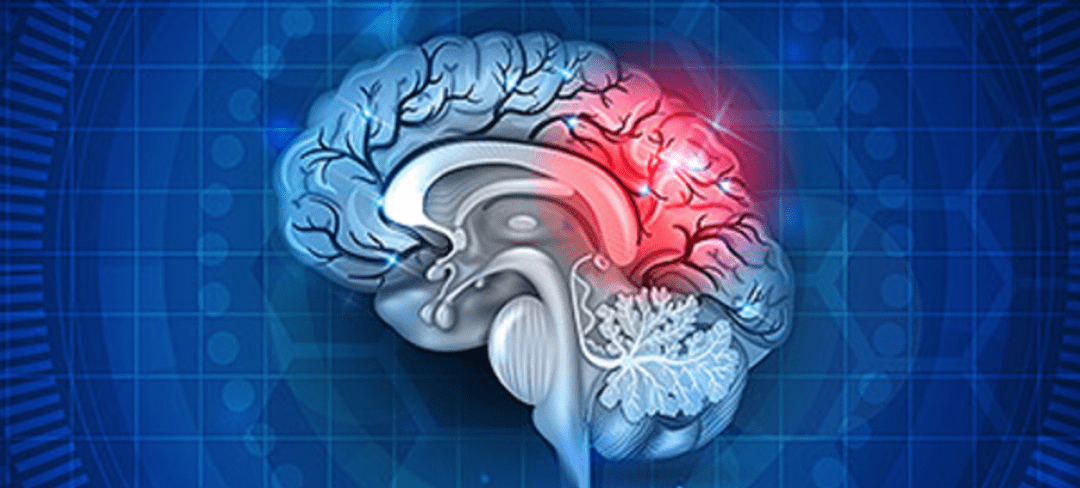


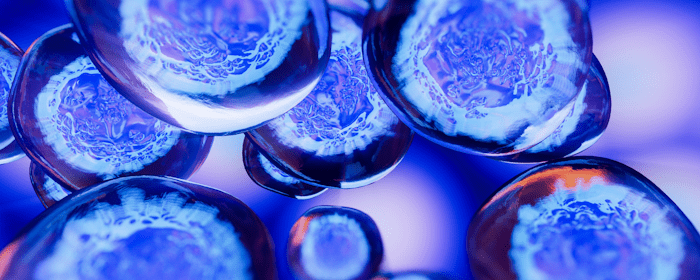
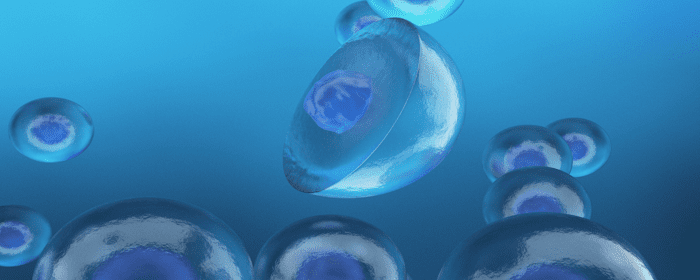
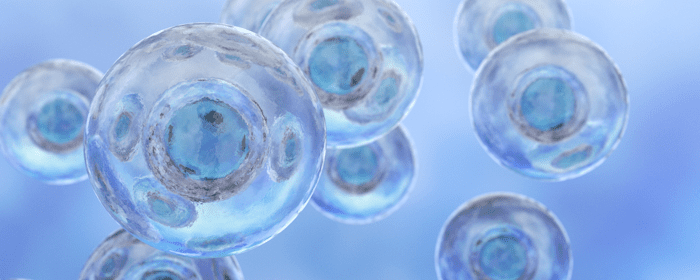
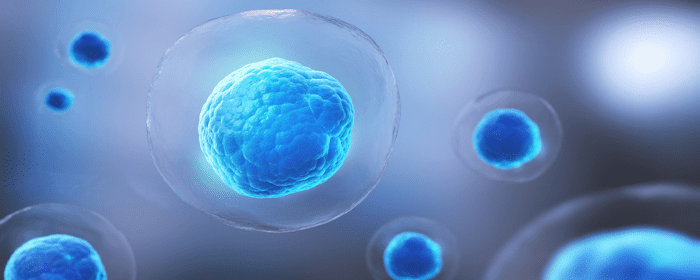
 St. Petersburg, Florida
St. Petersburg, Florida
